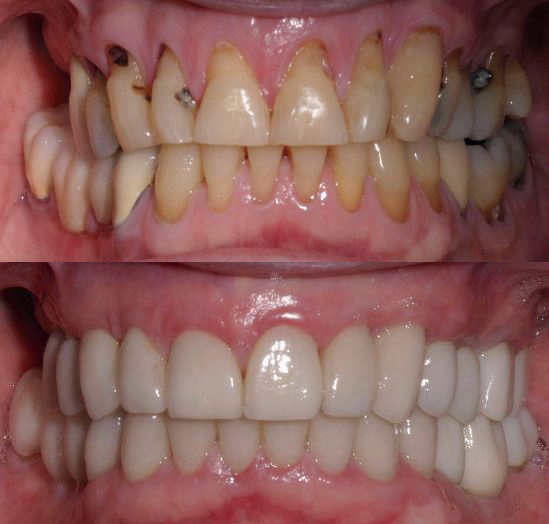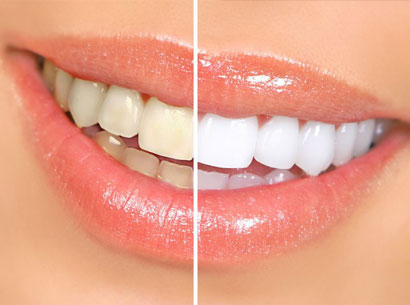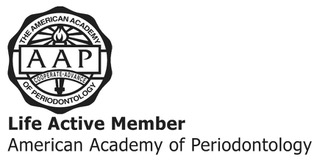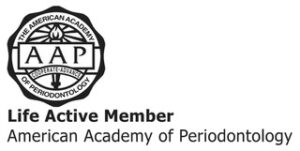We Treat More than Just Gum Disease
Periodontics 101
ASK YOURSELF: Do I have diabetes, heart disease, lung problems or other chronic illnesses? Do other members of my family have any of these conditions? Am I pregnant or am I considering becoming pregnant? Do I have missing teeth, bad breath, mouth pain or sores? Do I have spaces between my teeth, gums that bleed, or uneven or receding gums? Do I have dental implants, loose dentures, or extensive dental work in my mouth?
If you have any of the symptoms or conditions listed above, you should take out self assessment test.
We’re the Foundation of Your Overall Health.
Our mission for promoting good health extends beyond the mouth. That’s because periodontal diseases can adversely affect overall health and life expectancy.
In fact, there is a strong link between periodontal diseases and stroke and other heart diseases, diabetes, pregnancy complications, respiratory problems, pancreatic cancer, Alzheimer’s disease, osteoporosis, and more. These are all good reasons to keep your gums and your teeth healthy! Afterall, the quality of your life might depend on it.
What Is Periodontal (Gum) Disease?
Gum disease (periodontal disease) is the most common chronic bacterial infection in the US population. More than 50% of Americans over 30 years of age have destructive gum disease. And it may come as a surprise that more people lose teeth to periodontal disease than to decay. Because it is typically “silent” (like high blood pressure can be) and does not hurt, people who have it are often unaware of their condition.
Gum disease begins when bacteria (germs) attach to the teeth. Without daily removal of the bacteria, the gums get red, swollen and bleed. It affects the support structures of the teeth (gums and bone) and without treatment can lead to tooth loss. Its earliest form — gingivitis — is reversible, but only with professional therapy and good home care.
When the infection advances to periodontitis, “pockets” (spaces between the gums and teeth) form. Bacteria continue to migrate into these pockets and lead the infection into the bone support of the teeth. If left untreated, gum and bone tissue are destroyed, teeth become loose and are subsequently lost. Despite this potentially scary-sounding scenario, the great news is that gum disease fortunately is treatable and preventable!
Mouth Body Connection.
Although many people think that the mouth is divorced from the rest of the body and it doesn’t matter to their overall well-being, the health of the mouth does influence general health. Did you know when you take your dog to a veterinarian for a problem, the first thing the vet examines is their mouth? To learn more about the mouth-body connections, please click on these topics:
Heart Disease
Research suggest that people with gum (periodontal) disease are nearly 2X as likely to suffer from coronary artery disease as those who are periodontally healthy.
It is believed that bacteria from the mouth can affect the heart when they enter the blood stream, attach to fatty plaques in the coronary (heart) arteries and eventually contribute to clot formation. Researchers believe that the arterial plaques associated with gum disease increases systematic inflammation and may contribute to swelling of the arteries.
Periodontal disease can also make existing heart conditions worse. Individuals at risk for infective endocarditis may require antibiotics prior to dental procedures. Your cardiologist can help determine if your heart condition requires use of antibiotics prior to dental procedures.
Stroke
Research indicates a relationship between periodontal (gum) disease and stroke. In one study, people diagnosed with a shortage of oxygen (ischemia) to the brain were more likely to have an oral infection when compared to those that were orally healthy. The control of periodontal disease is an important factor in controlling and/or preventing stroke and heart disease.
If you are diabetic, you are at greater risk to have periodontal disease (gum disease) than people without diabetes. In fact, periodontal disease is often considered a major complication of diabetes. Individuals with uncontrolled diabetes are especially at risk for periodontal loss of support.
Not only does diabetes put an individual at greater risk to develop periodontal disease, but periodontal disease can negatively influence a diabetic’s ability to control their blood sugar.
Diabetics have an increased risk of diabetic complications when they have high blood sugar. Treatment of periodontal disease has been shown to result in better diabetic control which in turn decreases the number of ER visits and the associated risks of blindness, heart issues, and circulatory problems.
Researchers know that bacteria that grow in the oral cavity, especially in people with gum (periodontal) disease, can be inhaled into the lungs and cause respiratory infections like pneumonia as well as worsen allergies and breathing problems like asthma or emphysema.
Decreases of oral bacterial concentrations with appropriate professional tooth cleanings, mouth rinses, good home care, resulting in good periodontal health can reduce complications to chronic breathing disorders.
Pregnancy causes the gums to have an increased sensitivity to bacteria resulting in swelling and bleeding. Your grandmother might have told you that she lost her teeth during pregnancy. There are also now real concerns about having gum (periodontal) disease and risks to the newborn.
We’ve known for a long time that smoking and alcohol and drug use contribute to women having babies born early at a low birth weight. Now, evidence suggests a periodontal disease is a risk factor to premature delivery. Pregnant women who have gum (periodontal) disease may be 7X more likely to have a baby that is born too early or too small.
Gum disease seems to trigger increased levels of fluids that induce labor. Studies suggest that women whose periodontal disease is not treated and it worsens during pregnancy have a higher risk of having a premature baby.
All pregnant women, as well as women of childbearing age, are encouraged to contact our office so that we help you have the healthiest baby possible! We also want to prevent unnecessary tooth loss in a pregnant woman by treating the “pregnancy gingivitis” and establish a healthy mouth. This is Win-Win for both the Moms and their babies.
Stress can cause changes in how responsive our immune system reacts to challenges. Stress has been associated with the onset of cancers, high blood pressure (hypertension), and other health concerns. Stress is also a risk factor for periodontal disease because of the changes in a person’s immune response.
There are many drugs which can affect the mouth in a detrimental way. For example, oral contraceptives, anti-seizure drugs, and some categories of heart drugs can result in gums that are swollen and overgrown. Other medications (over 500!) may cause dry mouth (xerostomia) which can increase the risk for tooth decay.
Healthy Foundations to Looking and Feeling Great!
Your smile is one of the first things people notice when they meet you. Having a great smile boosts your self-confidence and improves your overall well-being. That’s why we provide services that will have you looking and feeling great. A healthy smile and mouth can change your life!
Don’t let issues with your smile get in the way of showing yours off! Here at Newhouse Perio our regenerative, restorative, and cosmetic solutions will get you smiling, feeling, and functioning again with confidence.
 Jawbone volume can be lost due to periodontal disease, tooth loss, pressure from dentures or partial dentures, trauma, injury, or atrophy. This results in unsightly deformities or indentations in the bone which can produce an unattractive restoration, a cleansibility problem, or an inability to place dental implants. Hard and soft tissue reconstruction — to build back lost structure — is an effective procedure to either prevent volume loss or remedy it, thus improving appearance, allowing dental implant placement or both.
Jawbone volume can be lost due to periodontal disease, tooth loss, pressure from dentures or partial dentures, trauma, injury, or atrophy. This results in unsightly deformities or indentations in the bone which can produce an unattractive restoration, a cleansibility problem, or an inability to place dental implants. Hard and soft tissue reconstruction — to build back lost structure — is an effective procedure to either prevent volume loss or remedy it, thus improving appearance, allowing dental implant placement or both.
If you are missing a single tooth, a crown restored dental implant is the most natural looking way to replace it. It functions like a natural tooth and unlike a bridge, it doesn’t involve neighboring teeth. An implant preserves the bone, so naturally looking jaw contours are maintained. What’s more, a single-restored dental implant is much easier to clean and does not catch food like a bridge. And it doesn’t get cavities!
 Healthy gums form the “picture frame” for the teeth. They also protect the teeth against decay. Root exposure or recession makes the teeth look long and unattractive. Recession can also make the teeth sensitive to hot, cold, or touch.
Healthy gums form the “picture frame” for the teeth. They also protect the teeth against decay. Root exposure or recession makes the teeth look long and unattractive. Recession can also make the teeth sensitive to hot, cold, or touch.
By recovering the roots and rebuilding the lost gum tissue, recession can be reversed, sensitivity decreased, and decay susceptibility reduced, resulting in a younger, prettier smile.
Sometimes, teeth cannot be saved for a variety of reasons – cracks or fractures, root canal failures, teeth whose structure can’t be restored, or impacted teeth associated with adjacent teeth. When this is the case, Dr. Newhouse can remove the teeth and perform socket regeneration so that the dimensions of the jawbone can be protected. Without such socket regeneration as much as 30% of the jawbone dimensions in all directions can be lost. Protecting the bone’s width and length becomes important for implant placement, for other types of esthetic tooth replacement, and for the bone support of adjacent teeth. In the end, it provides the foundation for model smiles and health!
Sometimes teeth look short and square and have what might be termed a “gummy” appearance. Teeth are typically thought to be more esthetic if they are longer than they are wide. Gum tissue can be reshaped so that all of the enamel portion of the tooth is exposed, creating a more attractive tooth shape. Gum recontouring can be done without unexpected changes to the natural tooth. And having this procedure prior to preparation and placement of crowns or veneers makes for the “prettiest” smiles!

Imagine one hour to whiten teeth. That’s because, at Newhouse Periodontics, we use Philips Oral Healthcare’s Zoom!® chairside bleaching system. With this system, our patients with average teeth typically see a lightening of 3 to 7 shades with a single application. The entire process takes about one-and-one-half to two-hours from start to finish, though the actual bleaching process takes about an hour. And while results of how white you can get your teeth vary from patient to patient, we’re sure you’ll love the results.
Invisalign® is a method of tooth movement using custom made clear smooth aligner “trays” to straighten teeth. They are made of invisible plastic that you wear over your teeth. This method of treatment helps correct conditions like crowding, spacing, deep bites, open bites, crossbites, narrow arches, and midline discrepancies. Invisalign® works without brackets, bands, or wires to gradually move teeth into the desired position. Because the aligners can be easily removed at any time, you can pop them out to eat, drink, and perform effective brushing and flossing. They are comfortable to wear and do not irritate cheeks and lips. And, since they are virtually invisible, no one knows you’re wearing them. Typical Invisalign® treatment takes about a year from start to finish.
A frenum is a small fold of tissue that attaches the gums to the inner lips, cheeks, and tongue. At times, these attachments cause pulling on the gums when the cheeks, lips, or tongue are moved during everyday activities like eating, speaking, or brushing. Over time, these “pulls” cause the gums to recede or shrink away from the tooth causing root exposure or can even cause undesirable spaces between teeth.
A frenectomy is a procedure where the frenum is repositioned so that it no longer creates tension on thin tissue or keeps teeth apart. It is a simple procedure that is typically done with local anesthetic so there is no procedural pain. There is with little to no post-surgical discomfort or swelling.
Part of looking and feeling good is not to have bad breath impact your interactions with others. 50% of adults have halitosis (bad breath). Frequently the person with bad breath does not know he/she has it because those around him/her do not feel comfortable in telling the person that they have it. Because causes of bad breath vary, the source first needs to be identified in order customize the treatment for it. Bad breath can be related to gum disease, tooth decay, ineffective oral hygiene procedures, foods, bacteria associated with the tongue or tonsils, stomach problems, sinus issues, diabetes, smoking, and dentures to name a few.
Dr. Newhouse can identify the source or possible sources of a person’s bad breath and then develop a personalized treatment program to target the problem and eliminate the odor.

















